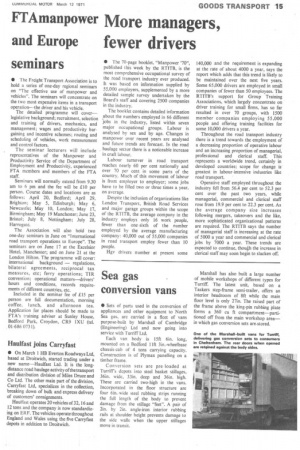Sea gas conversion vans
Page 17

If you've noticed an error in this article please click here to report it so we can fix it.
• Sets of parts used in the conversion of appliances and other equipment to North Sea gas, are carried in a fleet of vans purpose-built by Marshall of Cambridge (Engineering) Ltd and now going into service with Turriff Ltd.
Each van body is 15ft 6in. long, mounted on a Bedford 1 1ft 3in.-wheelbase chassis-cab of 4 tons carrying capacity. Construction is of Plymax panelling on a timber frame.
Conversion sets are pre-loaded at Turriff's depots into steel basket stillages, 36in. wide, 33in. deep and 36in. high. These are carried two-high in the vans. Incorporated in the floor structure are four 6in.-wide steel rubbing strips running the full length of the body to prevent damage from the stillage "feet". A pair of 2in. by 2in. angle-iron interior rubbing rails at shoulder height prevents damage to the side walls when the upper stillages move in transit. Marshall has also built a large number of mobile workshops of different types for Turriff. The latest unit, based on a Taskers step-frame semi-trailer, offers an interior headroom of 8ft while the main floor level is only 27in. The raised part of the frame above the king-pin rubbing plate forms a 360 cu ft compartment—partitioned off from the main workshop area— in which gas conversion sets are stored.






















































































